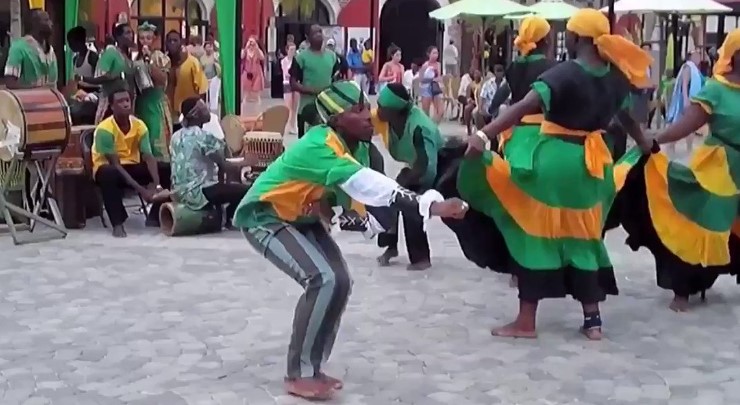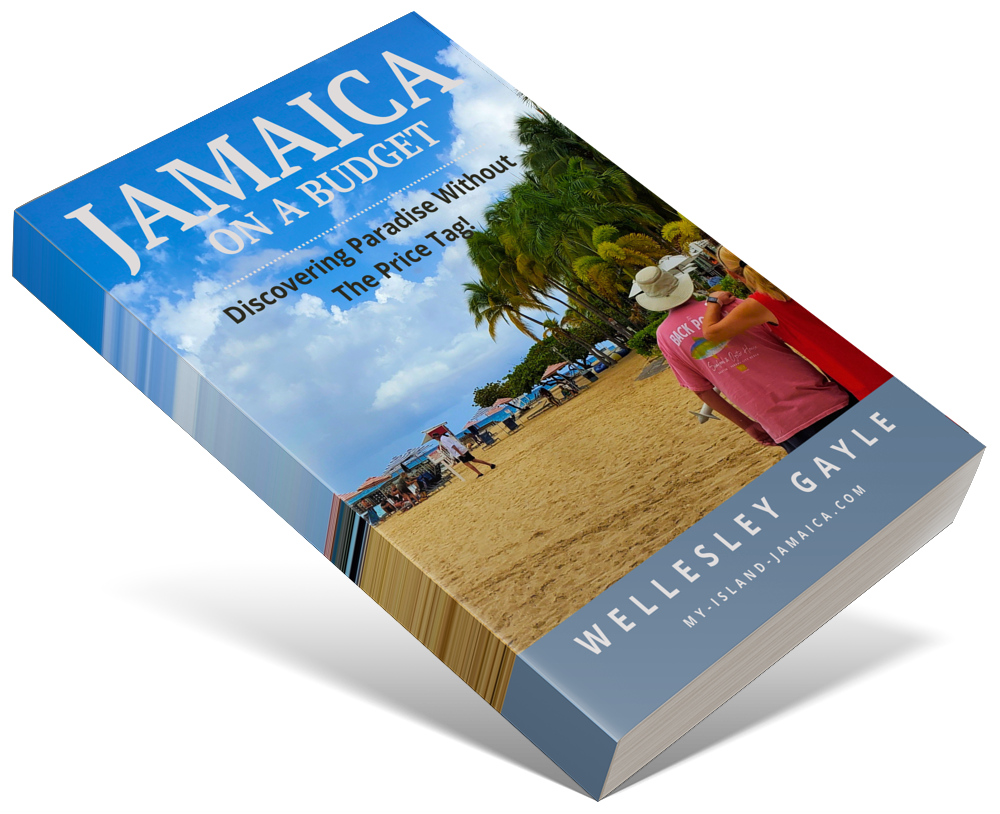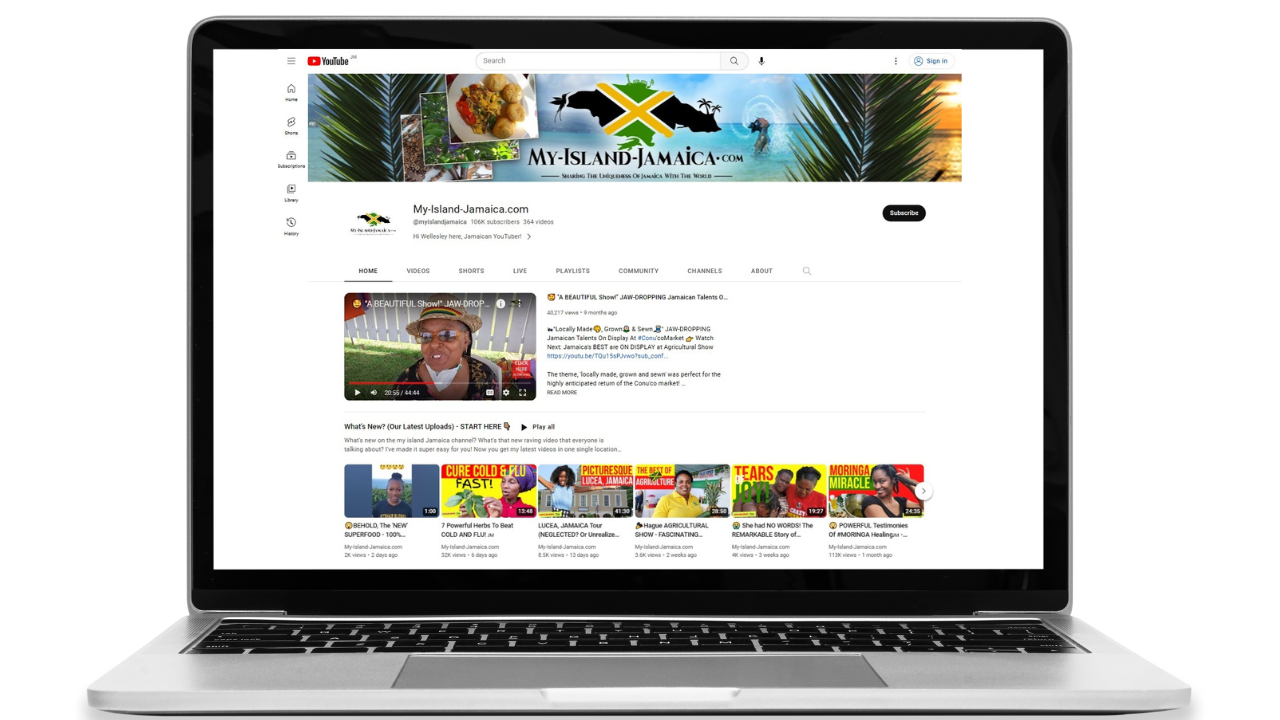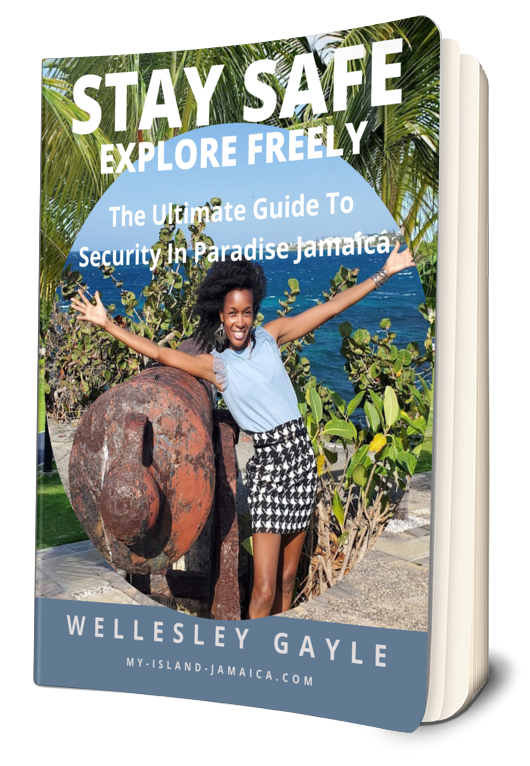Subscribe for all my updates and don't miss a thing! Sign me up!
What is Kumina in Jamaica?
Its Origins & History
Sharing Is Caring! Share this awesome content with your friends now.
by Venesha Johnson | Associate Writer
Our connection to our African ancestry comes through many of our spiritual practices. Kumina is one such example of this.
New! Take a piece of Jamaica with you💃!
Savour the memories! Now you can get your authentic Jamaican souvenir items, as well as traditional Jamaican herbs, spices and housewares on our popular e-store. Click Here to learn more.
And, if you ever need a trustworthy and knowledgeable local guide, consider booking a private tour with us!
What is Kumina in Jamaica?
An afro-Jamaican cultural practice known as Kumina or cumina. It is a form of music, dance, and religion that is mostly practised by Jamaicans. Kumina is a traditional tool used to honour our African ancestors.
It is a kind of art that combines drumming, singing, and dancing characteristics which make is easily distinguishable through the movements and cadences used.
What is Kumina in Jamaica?
An afro-Jamaican cultural practice known as Kumina or cumina. It is a form of music, dance, and religion that is mostly practised by Jamaicans. Kumina is a traditional tool used to honour our African ancestors.
It is a kind of art that combines drumming, singing, and dancing characteristics which make is easily distinguishable through the movements and cadences used.
It's unclear when Kumina first appeared in Jamaica. But, it is thought to have existed in the eighteenth century and further developed in the middle to the late nineteenth century.
The African indentured immigrants from the Congo region of Central Africa who arrived in the 1850s during the immediate post-emancipation period were the first to have an impact on Kumina. In St. Thomas, where many of the immigrants settled, Kumina flourished. The parishes of Portland, St. Mary, St. Catherine, and Kingston, however, also became part of the religious movement.
Myal and Obeah, two Akan-derived traditions, continue to be diametrically opposed within the Kumina faith. While the term "Myal" is often used to describe the possession of Kumina dancers at religious rites, the Obeah man continues to be a master of science and the spirits.
There are two categories of Kumina deities:sky-bound and earth-bound deities. The Supreme Being is the sky-bound deity Oto King Zombi. Obei and Shango are two other Kumina sky-bound deities. David, Ezekiel, Moses, Cain, and Shadrak are instances of earth-bound deities in Kumina and are evidence of syncretism with Christianity.
A Kumina sect might have both men and women as leaders. The women are addressed as "Queen" or "Mother/Madda," while the men are addressed as "King" or "Captain".
After receiving extensive instruction from their predecessor in the feeding patterns, ritual practices, dances, rhythms, and songs of a variety of spirits, the leaders must be able to govern zombies or spirits and take on leadership roles.
What Happens in a Kumina ceremony?
The predominance of dance and ritual as means of religious and cultural expression is one of Kumina's distinctive characteristics. To open channels of connection with the ancestor spirits, dance and rituals are performed.
Singing, dancing, music, and sacrifices are all part of the rites. All of these are employed to produce the "Mayal" environment, which is conducive to spiritual possession.
When possessed by one of the three types of gods—sky, earthbound, or ancestral zombies—the last of which is the most typical form of possession—one is said to "catch 'Myal'. Each god can be identified by the unique dance moves performed by the possessed as well as the music and drum rhythms that it responds to.
A Kumina session's three most crucial components are drumming, singing, and dancing. Due to their ability to influence the spirits, the drums are thought to be the most significant. Instruments and songs used in Kumina Ceremonies:
- Kbandu (battery of drums)- Larger and lower-pitched drums are used, and the first and third beats are highlighted in the rhythm.
- Playing Cast or lead drums- On this set of drums, the most intricate and particular "spirit" basic beats are performed. The drummers on the Playing Cast are revered because they need to be skilled at playing the various rhythms that call forth, drive away, and tame the numerous spirits or deities.
- Scrapers- a common grater that is utilized as an instrument.
- Shakas- A gourd or tin can rattles.
- Catta Sticks- Used to maintain a constant rhythm on the drum's body behind the drummer by the "rackling men."
- Songs- The two forms of singing used in Kumina celebrations are known as bailo and country. The Queen and the King/Captain perform both bailo and country songs in a call-and-response exchange. A call and response is when one line or lyric is "raised" or sung, followed by a response from others.
Bailo, or less religious songs in Jamaican creole, are sung during shows and exhibitions.
During mayal, country is used to connect with the spirits and is spoken in the Ki-Kongo language.
- Dance- The spirits that are summoned at Bailo dances announce their presence by "mounting" or possessing a dancer, whose particular dance style aids in recognizing the spirit but can cover all movement possibilities.
The fundamental dancing stance consists of a nearly straight spine and hip thrusts as the feet inch along the floor. Either alone or with a partner, the dancers walk in a circular rhythm around the musicians and the centre pole.
The use of the arms, shoulders, rib cage and hips gives the dancers plenty of room to improvise and interpret the counterbeats or polyrhythms. A few popular dance variations include spins, dips, and "breaks" on the last beat.
Where in Jamaica is Kumina Practiced?
Kumina is still active in Jamaica today but is believed to be mostly practised in the Parish of St. Thomas, a parish highly associated with Obeah and spiritual works. Kumina dances are sometimes performed traditionally in stage shows and other cultural exhibitions.
Sharing IS Caring! Please help me get the message out by sharing this article with your friends on social media (links below). Thnx ;-)
If you found this page useful, please consider subscribing to my weekly newsletter, to get even more.
It tells you each week about the new information that I have added, including new developments and great stories from lovers of Jamaica!
Return to Jamaican Dance Steps from What is Kumina in Jamaica?
Return to My Island Jamaica Homepage from What is Kumina in Jamaica?
References & Sources For What is Kumina in Jamaica?
- Jamaica's heritage in dance (no date) Jamaica Information Service. Available at: https://jis.gov.jm/information/jamaicas-heritage-dance-music/jamaicas-heritage-dance/#:~:text=Kumina%20is%20a%20religious%20group,between%20the%201840s%20and%201860s (Accessed: December 4, 2022).
- Kumina - (2018) diG Jamaica. Available at: http://digjamaica.com/m/indigenous-religions-in-jamaica/kumina/ (Accessed: December 4, 2022).
- Kumina drumming (no date) Island Stage Mag. Available at: https://islandstagemag.com/history-of-reggae/kumina-drumming/ (Accessed: December 4, 2022).
- Religious wiz (no date) RELIGIOUS WIZ. Available at: http://religiouswiz.blogspot.com/p/blog-page_1875.html (Accessed: December 4, 2022).
What is Kumina in Jamaica? | Written: December 4, 2022
New! Get My Latest Book👇🏿
|
You asked, I've answered! You no longer need to save for months or years, to enjoy paradise! I spilled the beans! sharing my top tips on finding cozy accommodations and secret gems, only the way a native could! Click Here to pick it up on my e-store and start saving now! |
See The Best Of Jamaica - In Videos!
|
My channel reaches over 140,000 subscribers worldwide and has leveraged over 11 million views, sharing, what I call 'The Real Jamaica'. Subscribe today and join our family of viewers. |
Read More ...
New! Experience The REAL Jamaica!
Book Your Private Tour here and experience Jamaica the way we (locals) do!
P.S. Didn't find what you were looking for?
Still need help?
Click Here to try our dependable and effective Site Search tool. It works!
Or, simply click here and here, to browse my library of over 500 questions and answers! Chances are someone already asked (and got an answer to) your question.









New! Comments
Have your say about what you just read! Leave me a comment in the box below.